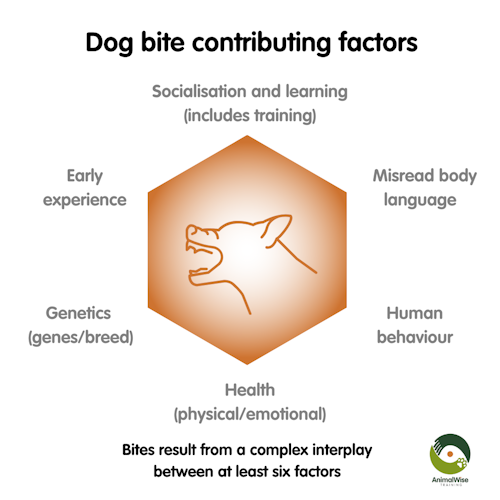Although veterinarians and animal industry professionals, e.g. council rangers, experience more incidents of dog bites, this is only part of a much bigger picture.
It is common knowledge that vets and animal industry professionals like council rangers experience higher incidents of dog bites, as they are handling dogs at hugely stressful moments in the dog’s life (for health care or to capture stray dogs off the street, for example). However, this is only part of a much bigger picture.

A notable increase in dog bites worldwide
In recent years, there has been a notable increase in dog bites worldwide, including here in Australia. An estimated 100,000 dog bites are reported annually in Australia, with over 2000 requiring hospitalization for treatment each year.[i] Dog bites affect all age groups, although children are particularly vulnerable. This trend is concerning for dog owners and non-owners alike, including the council officers at the coalface dealing with attacks. It’s an issue that deserves a deeper look.
Although genetics play a part, it’s not just about the breed
It’s crucial to understand that this issue is not rooted in specific dog breeds, as it has been shown in Australia and around the world that banning certain breeds has not been able to stem the flow of rising bite injury numbers. NSW state government agency data reveals that dog attacks increased from less than 900 incidents in 2004 to more than 5,000 in 2024. That’s more than a five time increase, while the number of pets in the state only doubled in that time.[ii]
While genetics do play a role in dog aggression, so too do socialisation, environment, learning, and our human ability to read body language and behave appropriately around dogs.
The popular focus on breed specific legislation has been understandable historically due to global trends, notable fatalities and the need to be doing something. However, it has proven hard to regulate. Breed specific legislation is not supported by the British, US, Canadian or Australian Veterinary Associations. Breed on its own is not an effective indicator or predictor of aggression in dogs, and focussing on it misses out on many other critical preventative avenues.
Contributing factors in dog bites
Genetics
- Genes, of which breed is only a part
Early experience
- What did the dog experience in critical early development windows
- Scary experiences in the 7-14 week window can predispose to fear/anxiety/aggression in later life
Socialisation and learning
- What did the dog experience growing up, including training methods?
- Positive rewards based training reduces the risk of aggression later in life
- Training methods causing fear or discomfort (such as using choker chains, yelling and jerking on the dogs lead to stop pulling behaviours) can predispose to fear/anxiety/aggression in later life
Health
- Including physical health (pain or discomfort may lead to aggression)
- Including psychological health (anxiety disorders may predispose to aggression)
Misreading body language
- Humans often miss or misread key dog body language signs
Human behaviour
- Dog bite video evidence suggests inappropriate human approaches, like leaning over, unwelcome petting, or restraining dogs (for example through hugging), to be prevalent prior to bites.[iii]

Dog bites result from a complex interplay between multiple interacting factors.[iv] [v] [vi]
The good news is, in addition to school-based education initiatives, education of the dog owning public around choosing behaviourally appropriate dogs, how to socialise them appropriately using positive rewards-based methods, and how to read their body language can go a long way.
In Part 2 of this series, we’ll look in more detail at three critical factors that play a role in dog aggression.
[i] Rajshekar M, Blizzard L, Julian R, Williams AM, Tennant M, Forrest A, Walsh LJ, Wilson G,
The incidence of public sector hospitalisations due to dog bites in Australia 2001–2013
[ii] https://www.olg.nsw.gov.au/public/dogs-cats/responsible-pet-ownership/pound-and-dog-attack-statistics/
[iii] Owczarczak-Garstecka, S. C., Watkins, F., Christley, R., & Westgarth, C. (2018). Online videos indicate human and dog behaviour preceding dog bites and the context in which bites occur. Scientific Reports, 8(1), 7147. https://doi.org/10.1038/s41598-018-25671-7
[iv] Australian Veterinary Association 2012 Dangerous Dogs – A sensible solution. https://www.vetvoice.com.au/articles/dangerous-dogs-a-sensible-solution/
[v] Beaver et al 2001 “A community approach to dog bite prevention – AVMA Task Force on Canine Aggression and Human–Canine interactions” JAVMA 281 (11) 1732 – 1749.
[vi] Seksel K 2002 “Report to the NSW Department of Local Government on Breed Specific Legislation issues relating to control of dangerous dogs”.
